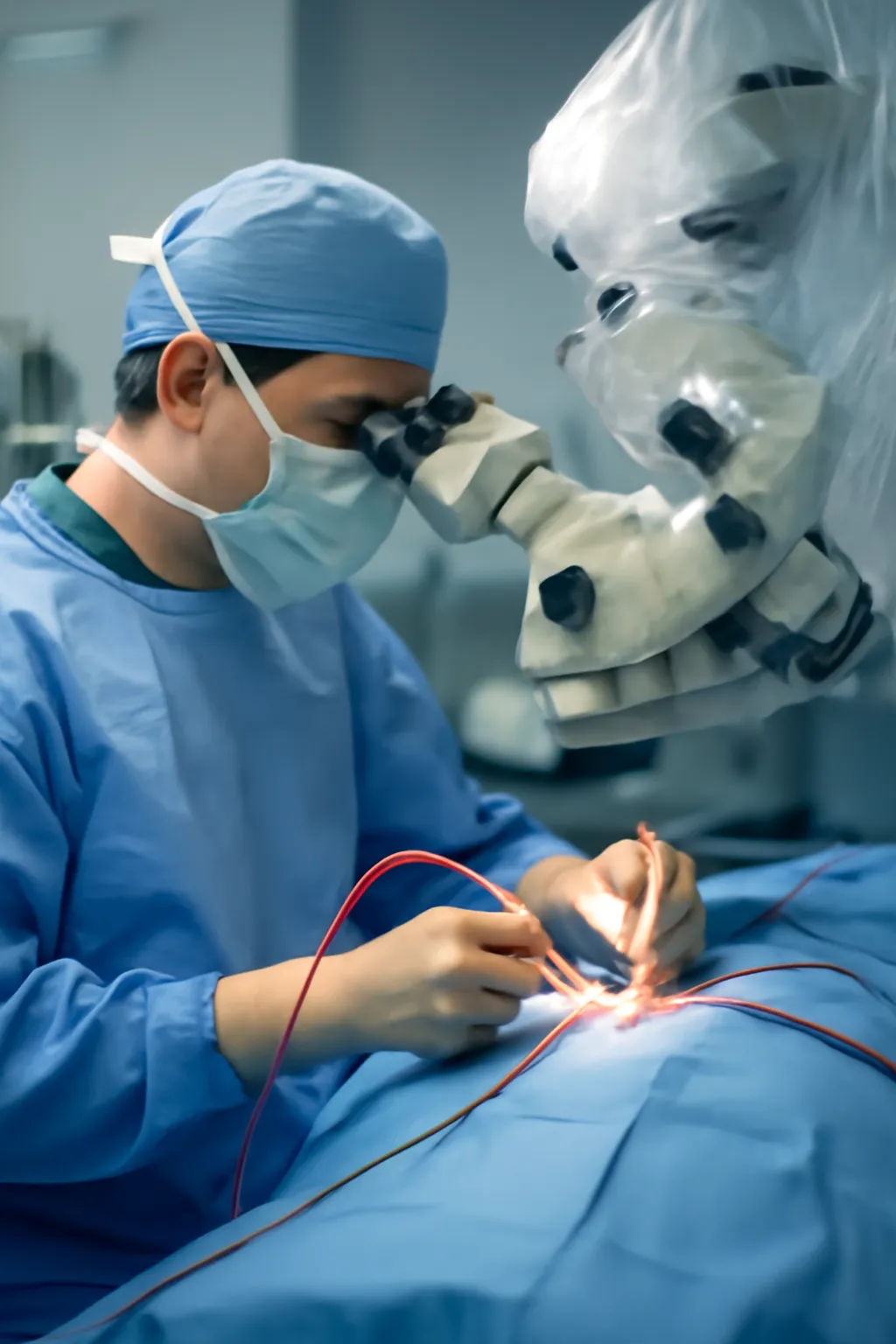What happens after a cerebral hemorrhage caused by Moyamoya disease? How does surgery affect recovery? Explore the intricate procedure and aftermath of Moyamoya disease.
Moyamoya disease, a rare and progressive condition characterized by the narrowing of arteries at the base of the brain, leads to a reduced blood supply. This can result in strokes, brain hemorrhages, and other serious neurological complications. A cerebral hemorrhage, one of the most severe outcomes, often requires a complex surgical procedure to restore circulation. This article delves into the procedures used to treat cerebral hemorrhages in patients with Moyamoya disease, the aftermath, and the risks of subsequent brain infarctions.
Moyamoya Disease Cerebral Hemorrhage: A Life-Threatening Event
Cerebral hemorrhage occurs when a blood vessel in the brain bursts, leading to bleeding within the brain tissue. In the case of Moyamoya disease, this is due to the weakening and rupture of small, fragile blood vessels that are formed as collateral circulation in response to the narrowing of the primary arteries. This results in an increased risk of brain hemorrhages and strokes, often leading to significant neurological deficits.
The procedure to treat Moyamoya-induced cerebral hemorrhage involves careful surgical intervention, often starting with an evaluation using advanced imaging technologies like MRI or CT scans. These techniques help identify the exact location of the hemorrhage and the extent of blood vessel damage. Surgical options may include direct revascularization, in which the surgeon connects a healthy blood vessel to the brain to restore normal blood flow.
During the procedure, specialized instruments, including microscopes and electrocautery tools, are used to ensure precision in delicate areas of the brain. The goal is not only to stop the hemorrhage but also to create new, healthy pathways for blood flow to prevent future episodes of ischemia or stroke.
👉 Learn more about the Moyamoya disease treatment options 👈
Aftermath of Moyamoya Disease Cerebral Hemorrhage Surgery
Once surgery is completed, patients enter a critical recovery phase. The aftermath of cerebral hemorrhage surgery can vary widely depending on the severity of the hemorrhage, the success of the surgery, and the patient’s overall health condition.
The most immediate concern after surgery is the prevention of further bleeding or complications, such as infection or the formation of blood clots. Patients typically remain in the hospital for monitoring in the first few days, during which time medical teams will focus on pain management, controlling swelling in the brain, and ensuring proper hydration and nutrition.
Post-surgical recovery may include:
-
Physical rehabilitation After brain surgery, many patients require physical therapy to regain motor function, balance, and coordination. This is especially important in cases where the hemorrhage or surgery has affected the motor cortex, leading to weakness or paralysis in certain body parts.
-
Speech and cognitive therapy Brain hemorrhages often impact cognitive functions such as memory, language, and concentration. Speech and cognitive therapists help patients regain these abilities, focusing on memory exercises, communication, and daily living skills.
-
Psychological support The psychological toll of surviving a brain hemorrhage can be profound. Many patients experience depression, anxiety, and post-traumatic stress disorder (PTSD) as a result of their experience. Psychological counseling or support groups are often recommended as part of the recovery process.
The goal during recovery is not only to stabilize the patient’s condition but also to provide support for a successful rehabilitation process, which is essential for long-term improvement in quality of life.
🔍 Discover the recovery strategies for Moyamoya disease patients 🔍
Moyamoya Disease and Brain Infarction: Long-Term Risks
While surgery can significantly reduce the risks associated with Moyamoya disease, the long-term effects remain a concern. One of the most dangerous risks is the potential for a brain infarction, a condition where brain tissue dies due to inadequate blood supply.
Post-surgical brain infarctions are typically the result of a re-narrowing of the blood vessels or insufficient collateral circulation. Even after successful revascularization surgery, some patients may experience new blockages or complications in the brain’s delicate vascular network. These complications can lead to ischemic strokes, cognitive decline, or further neurological damage.
Research suggests that long-term monitoring through regular MRI or CT scans is essential for patients who have undergone surgery for Moyamoya disease. This monitoring helps identify any potential vascular issues before they lead to more severe outcomes like brain infarctions. Furthermore, medical management after surgery, including medications to control blood pressure, cholesterol levels, and clotting, is crucial to reducing the likelihood of a brain infarction.
Aside from medical interventions, lifestyle factors also play an important role in the prevention of future strokes or infarctions. Patients are often advised to maintain a healthy diet, engage in regular exercise, and avoid smoking or excessive alcohol consumption. These habits, in conjunction with careful monitoring and medication management, are key in reducing the risk of future complications.
📚 Learn more about Moyamoya disease and brain infarction prevention 📚
In conclusion, the procedure for treating cerebral hemorrhages caused by Moyamoya disease is a complex and highly specialized surgery aimed at preventing further damage and restoring blood flow to the brain. While the aftermath of surgery involves a rigorous rehabilitation process, it is vital for patients to remain vigilant about the long-term risks of brain infarctions and other complications. With proper care, monitoring, and lifestyle changes, many patients can live fulfilling lives post-surgery.
“The greatest wealth is health.” – Virgil. Prioritizing your well-being through both medical intervention and lifestyle modifications is essential in managing Moyamoya disease and ensuring a better quality of life.






